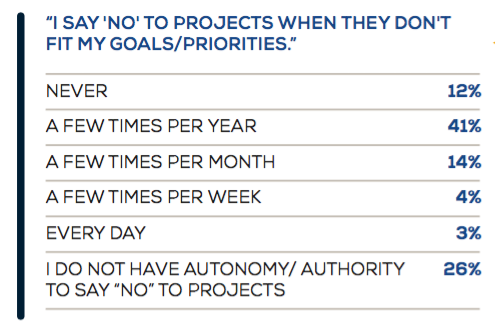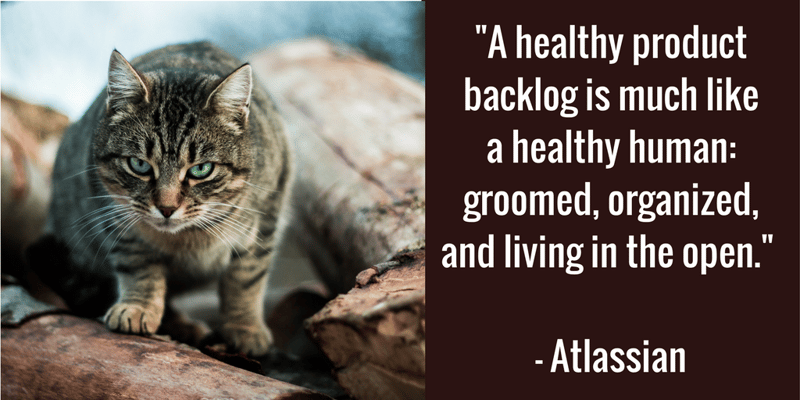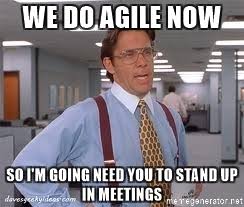Improve your Marketing Ops every week
Subscribe to our blog to get insights sent directly to your inbox.
Confront your process problems head on with a Sherpa by your side.
Explore support options that are tailored to meet you wherever you are on your climb.
Learn from the stories of marketers already on the road to process improvement.
Featured Resource

State of Agile Marketing
Learn from 8 years of study on how marketers are increasing their agility.
Download Report
If you're among the many marketers considering adopting Agile practices, chances are you've asked yourself a variation on this question: will Agile marketing make me look good at my next review?
Speed, efficiency, and adaptability are nice, but are they really going to help marketing teams hit their quarterly numbers?
In response, allow me to present an Agile marketing case study that features 434% more page views, 1,222% more email subscribers, and 9,360% more marketing qualified leads.
These aren’t aspirational numbers; they’re the real results of CoSchedule’s Agile approach to marketing.
Their small but mighty Agile squad has been crushing it for years, thanks to short, focused delivery of valuable work that solves real problems for their audience. I sat down with their head of marketing Nathan Ellering (who also acts as their Product Owner and Scrum Master) to hear more.
Nathan is the first to admit that his team doesn’t subscribe to “traditional Agile.” CoSchedule was an Agile company before the marketing team existed, so they’ve spent years absorbing Agile ways of working and adapting them to their work.
You’ll hear echoes of Scrum in the story that follows, but Nathan and his team are also ready to continuously inspect and adapt their process irrespective of the Scrum Guide’s prescriptions.
They aren’t Agile purists, which is likely why they’ve been so successful.
The first thing to note about CoSchedule’s setup is how customer centric it is.
They’re relatively small, only 10 or so people, so in many ways they act like a single Agile team.
But within the larger marketing function exist several micro-teams, all of which are organized largely around stages of the customer journey:
Each of these sub-teams has its own core KPI, which is the primary metric by which their work is evaluated.
This type of focus is what allows groups to have laser focus, and what ultimately lets them effectively choose what not to do.
If an idea or an external ask doesn’t align to a group’s KPI, they have a straightforward way to de-prioritize or — gasp — not agree to do that work.
 CoSchedule's team is navigating this common marketing challenge by focusing on core KPIs.
CoSchedule's team is navigating this common marketing challenge by focusing on core KPIs.
The Content/Traffic/SEO team, for instance, is responsible for bringing in email subscribers and prospects. If a proposed project isn’t likely to deliver those outcomes, they won’t agree to do it, no matter how cool it might sound.
This ability to say no to work from a data-centric place is massively powerful, and it’s something that many other marketing groups lack.
Every week all these micro teams come together for a sync meeting, where they have the opportunity to share ideas and influence what other groups will work on.
Nathan emphasizes that the power of this meeting is to focus on doing the right things, which CoSchedule characterizes as 10x opportunities. This means they want to do work that’s likely to propel the group forward in a serious way, or deliver ten times the typical result.
Incremental gains are nice, but the entire marketing team knows that 10x work is the company priority, so they use that as a filter to decide on top priorities.
This weekly sync is also important because with a smaller team there are a lot of dependencies.
Each team relies on the others to get stuff done, so they need to align on what’s coming up and how each group will contribute.
Once an opportunity is chosen, or labeled as a “Top Opp,” it’s time to really scope it out.
CoSchedule makes use of their own tool, as well as lightweight options like Google Docs to create a project plan.
This is the work they’ll really do, or the activities they plan to engage in to deliver the desired outcome. Their project summary includes:
This becomes a project brief, which is a complete yet concise two-page document. It also identifies the work team who needs to contribute.
The Top Opps meeting is a bit like a project kickoff, except that even once it happens a project might not begin immediately.
Each member of the project team will first ensure they have enough bandwidth to commit to the new project.
To achieve this, they examine their team backlog.
Each micro team has its own backlog of work, so whatever they’re going to be doing to contribute to a top opportunity will be visualized there.

As new projects spin up and ongoing marketing maintenance continues, the teams manage their daily efforts using a daily standup meeting.
Right now the whole marketing department does standup together, with marketing leader Nathan acting as their Scrum Master and keeping everyone on track. Despite their relatively large size for an Agile team, they still get standup done in 15 minutes.
They once tried doing standup with each micro team separately, but quickly discovered that the meeting worked much better when they all met together.
“Standup is a game changer,” Nathan says. “We don’t need to schedule time to collaborate because it just happens. And there’s nothing better for finding roadblocks early.”
Marketing teams often struggle with integrating remote team members into Agile ceremonies, but Nathan says CoSchedule’s few remote team members benefit enormously from the daily check in, even if they’re one of the only people not really face to face.

They tried once to use a virtual standup, sharing information via Slack instead.
Almost instantly the once-awesome meeting devolved into a rote status meeting. The team unanimously agreed to return to the daily face to face meeting instead.
Along with Top Opps meetings, the CoSchedule team also has weekly demo meetings to show how projects are progressing.
It doesn’t matter if things aren’t perfect; demos are designed to show work in whatever stage it’s currently in.
Their CEO Garrett Moon is at most of these, and they get his blessing on the project brief, including proposed process and timeline. Once the brief gets approved, the work team is free to follow it without much further oversight.
Essentially, the process gets approved once, and then the work is free to proceed unencumbered. For marketing teams continually bogged down in review cycles, this idea could hold the key to freedom.
(If you're looking for a single shiny takeaway from this Agile marketing case study, this just might it.)
Garrett’s presence also helps ensure that marketing’s day-to-day efforts are aligned with the larger CoSchedule strategy, making marketing feel connected and relevant rather than an afterthought.
When a project is finished and launched, the weekly demos are also used to share outcomes from completed work. The data collected and shared will inform what work becomes future Top Opps.
Outside of the weekly review, everyone also has continual visibility int work at the project, team, and individual level thanks to their in-depth use of their own CoSchedule tool.
Ultimately CoSchedule has designed a process that allows them to prioritize getting things done.
They’ve fully embraced the MVP approach without sacrificing quality or brand experience.
“Shipping is better than not shipping,” Nathan says.
And this isn’t just a mantra on a wall.
CoSchedule routinely delivers projects ahead of schedule, and that alone is an amazing endorsement of their hybrid Agile marketing method. Add in the best-in-class numbers they’re posting, and it’s clear they’re an Agile marketing case study worth following.

Andrea Fryrear is a co-founder of AgileSherpas and oversees training, coaching, and consulting efforts for enterprise Agile marketing transformations.
Subscribe to our blog to get insights sent directly to your inbox.
Subscribe to our blog to get insights sent directly to your inbox.